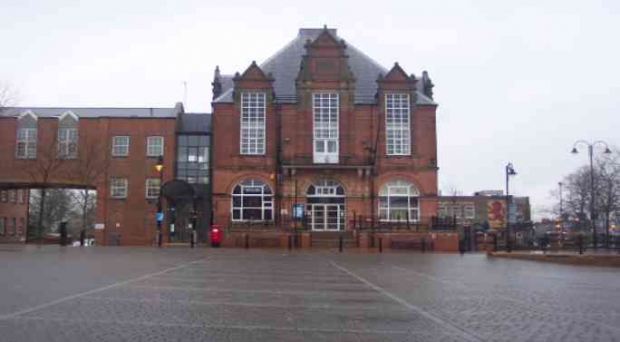
Ripley, a small town in Derbyshire with a population of 21,097, is listed in the Domesday book. No one is certain just when it came into existence, but we do know that the town itself used to be comprised of a few small cottages, farms and a mill owned by the Abbot of Darley. Back in the day, there were two watermills that were run by small fishponds. (See Belper for an example of a watermill.)
In 1251, Henry III granted a charter that allowed for a market one day a week and one fair a year that lasted three days. These traditions are still ongoing, although they have been altered slightly. The market switches days every so often, isn't as grand as it used to be and sometimes is accompanied by a French market and the fair lasts for anything up to a week and falls in october. Both events are held on the market place in front of the town hall.
Speaking of Ripley's town hall, it was built in 1880 and in the 1990's became the local council's headquarters.
Ripley, an industrial-based town since the 18th century, is surrounded by rich mineral resources and has played host to coal mining, steel mills, brickworks, quarrying and many other things. One notable company is the famous Butterly Company. It was formed in 1790 and specialised in engineering and construction. It still exists today and goes under the names of Butterley Engineering, Butterley Brick and Butterley Aggregates. Butterly have accomplished many great things in their time, a few notable achievements being St. Pancras Station's arches, the Falkirk Wheel and the Spinnaker Tower. They also constructed many of the railways throughout the country and even steam locomotives. One winding engine still exists at Middleton Top. Also, highly notable, the works at Butterley was the scene of the Pentrich Revolution in 1817.
Ripley also plays host to the Midland Railway, Butterly. Midland Railway strives to preserve locomotives and other items related to the Midland Railway from yesteryear. (You can even ride a steam train!)
On the outskirts of Ripley, you will find Butterly Hall, the former residence of Benjamin Outram. This is the headquarters of the Derbyshire Constabulary. (A-Division.) One of the largest police headquarters in the country. Derbyshire Constabulary consists of over 3000 employees, over 2000 Constables, 445 volunteers, 166 Community Support Officers, a dog section, Uniform Task Force, Road Policing Support (Collision Investigators) and 1 Helicopter for air support.
The methodist church in Ripley is said to be the oldest in the area and is still in use. It is located on Wood Street in Ripley (Not to be confused with Wood Street in Codnor) and is not far from the All Saints church on Church Street.
Barnes Wallis, the inventor of the bouncing bomb (See Derwent Valley), lived in Ripley and the house where he was born sports a plaque and is located near to the town center.
Ripley is also thought to be the 'most English town in England', as a lot of the population have purer English blood than most. This, of course, is a controversial topic for some, especially those who live away from the town.
Ripley has many choices for dining. It's food choices range from traditional English fare to Indian, Chinese, Turkish, Italian and, of course, Fish and Chips. The most notable food outlets being McDonalds across the road from A-Division on Butterly Park, Crest of the Wave (Or as we locals call it 'Crest o' wave'.) that does wonderful fish and chips and a pub called the Red Lion, which does really nice and reasonably priced food. (Although, it is a Wetherspoons.) Not as noticed as the aforementioned eateries is a little cafe called 'Cafe Delight' at the bottom of Oxford Street who do the best and biggest breakfasts in town for a very good price. (A huge plate of chips, egg and bean is only £2-something.)
Ripley is well worth a visit to any tourist in the are.
Ripley is well worth a visit, especially around fair time!